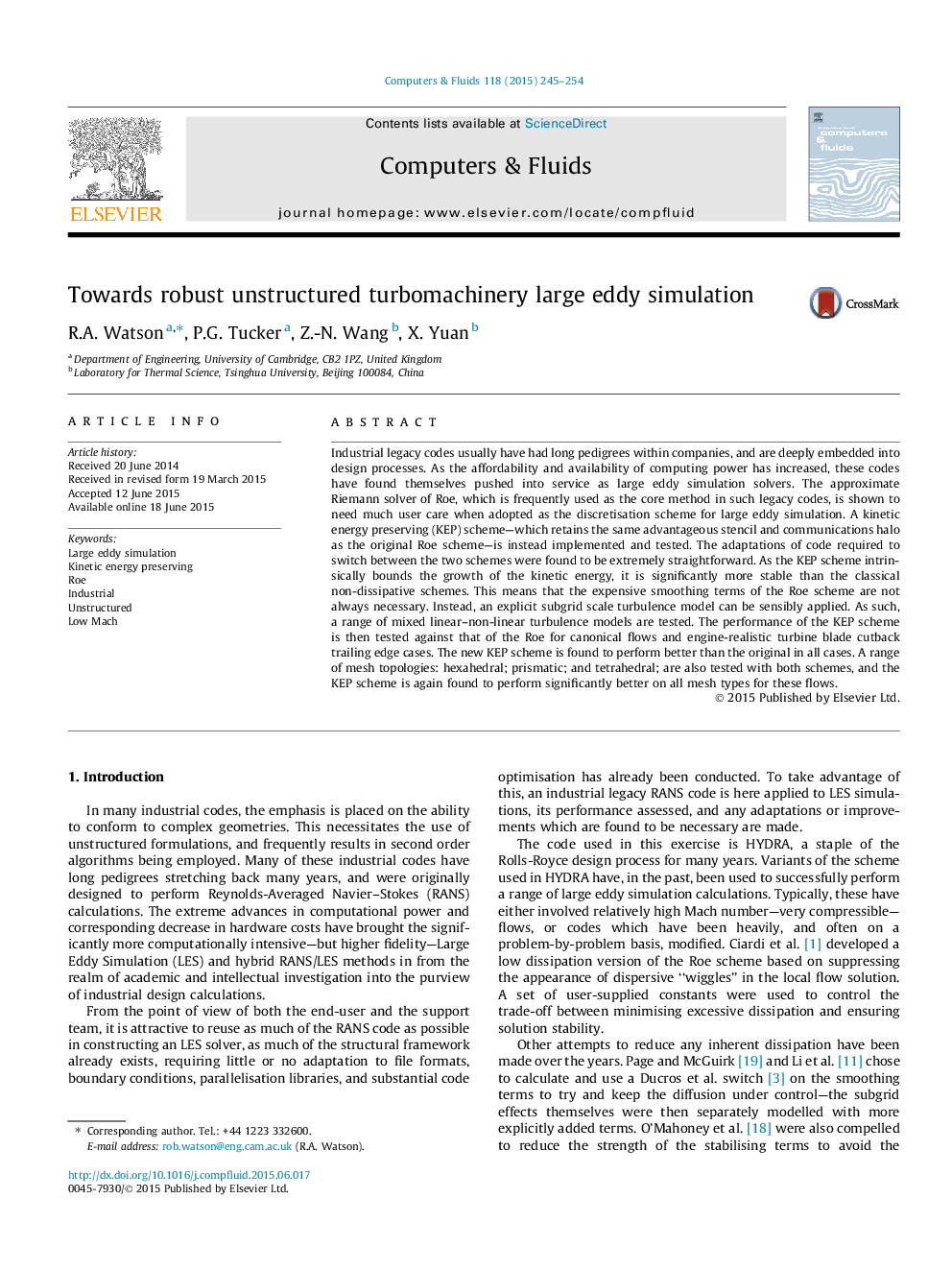| Article ID | Journal | Published Year | Pages | File Type |
|---|---|---|---|---|
| 7156907 | Computers & Fluids | 2015 | 10 Pages |
Abstract
Industrial legacy codes usually have had long pedigrees within companies, and are deeply embedded into design processes. As the affordability and availability of computing power has increased, these codes have found themselves pushed into service as large eddy simulation solvers. The approximate Riemann solver of Roe, which is frequently used as the core method in such legacy codes, is shown to need much user care when adopted as the discretisation scheme for large eddy simulation. A kinetic energy preserving (KEP) scheme-which retains the same advantageous stencil and communications halo as the original Roe scheme-is instead implemented and tested. The adaptations of code required to switch between the two schemes were found to be extremely straightforward. As the KEP scheme intrinsically bounds the growth of the kinetic energy, it is significantly more stable than the classical non-dissipative schemes. This means that the expensive smoothing terms of the Roe scheme are not always necessary. Instead, an explicit subgrid scale turbulence model can be sensibly applied. As such, a range of mixed linear-non-linear turbulence models are tested. The performance of the KEP scheme is then tested against that of the Roe for canonical flows and engine-realistic turbine blade cutback trailing edge cases. The new KEP scheme is found to perform better than the original in all cases. A range of mesh topologies: hexahedral; prismatic; and tetrahedral; are also tested with both schemes, and the KEP scheme is again found to perform significantly better on all mesh types for these flows.
Related Topics
Physical Sciences and Engineering
Engineering
Computational Mechanics
Authors
R.A. Watson, P.G. Tucker, Z.-N. Wang, X. Yuan,
